#wholock meta
Explore tagged Tumblr posts
Text
Are we doing Wholock meta again
9 notes
·
View notes
Photo










Amy’s Choice written by Simon Nye (Doctor Who, Season 5, 2010)
[This was in my drafts waiting for me to make the text look better and fix those glitches, lol. This might be helpful for people who don’t want to watch DW but might want to share in the screaming of some of the parallels to Sherlock and EMP theory in particular. I’ve made more of these, and i will post soon.
I mean, “This is gonna be a tricky one”. YEAH THANKS STEVEN, WE GOT THAT. The weight of that particular line is enhanced in the show itself because you can see there how the camera spins around them all, then the doctor says that as we cut to **opening credits**. Feel free to pick out every sherlock reference in there. There’s a couple.]
@the-7-percent-solution @shylockgnomes @ebaeschnbliah @gosherlocked @monikakrasnorada @holmesianscholar
132 notes
·
View notes
Text
SuperWhoLock survey
Hi! I'm still collecting answers in my superwholock survey and I would appreciate new respondents greatly. The more answers the more credibility, and I want to present the fandom in my MA thesis as adequately as I can!
Here's the link:
https://docs.google.com/forms/d/e/1FAIpQLSdjTSREGj06xk4LI2-wWvBDb6gv_rWvpvq6xpY2JOoaWNST0w/viewform?usp=sf_link
Thank you to all who already responded and shared ❤️
#superwholock#doctor who#sherlock#supernatural#fandoms#fan studies#tumblr#meta tumblr#superwholock survey#destiel#johnlock#wholock
30 notes
·
View notes
Text
Chapter 8 – Dream a Little Dream of Me: parallels with Doctor Who
What’s queer film and TV without a bit of Doris Day in your chapter title?
This was never intended to be a chapter by itself, but having seen @tjlcisthenewsexy’s fantastic video on Wholock parallels here X I had to start writing. Full credit for inspiration here to @tjlcisthenewsexy, who has definitely had many of these ideas independently, and I would fully recommend watching the video before you read this. I personally only really buy Moffat era Who as a direct parallel to Sherlock, largely because Moffat wrote both, but also because 2010-17 matches up exactly with our boys. Lots of people have drawn parallels between 2005’s Bad Wolf Bay scene (by Russell T Davies) and the tarmac scene – those parallels are definitely there, but I think they’re more due to common tropes in love-declaration scenes than from intent.
The Doctor Who episodes I’m largely going to be drawing on here are Amy’s Choice, Last Christmas, The Name of the Doctor and A Good Man Goes to War. Others will feature, but if you want a really strong grip on what I’m talking about, I’d recommend taking a look at all of these, or at the very least Amy’s Choice! But now – on with the show.
Time travel has always been possible in dreams. This line comes from The Name of the Doctor, which came out in 2013. The dream in question is a psychic telepathy connecting five of our main characters whilst they sleep, controlled by Madame Vastra. Much has been made of Madame Vastra being an explicit Sherlock mirror (X) with Jenny as her wife and explicit John mirror, so using a dream state to connect people across time should already ring TAB bells. But crucially, we’re not just focusing on telepathy here – we’re focusing on the ability of 19th century characters to use a dream state to connect with the 21st century. Given that we never see where River Song is connecting from, it’s safe to say that it is the 19th – 21st connection between the other characters that is important, like in TAB. The use of the word ‘always’ is really important here – it’s not saying that time travel is possible in dreams in the Whoniverse, but that it has always been possible. There’s an implication here that before time travel was invented, in a non science fiction world, dreams can still do this – and that’s what helps us to jump across to TAB.
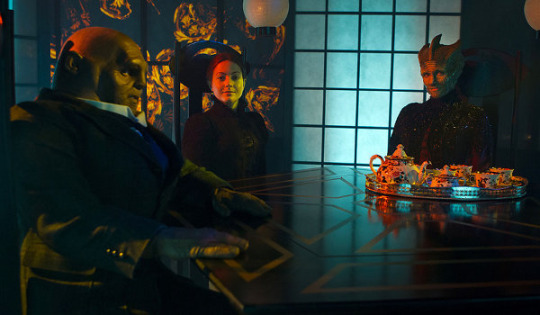
In the dream sequence in TNotD, Jenny is supposed to lock up before they go into their trance, but she forgets. Intruders break in, but because Jenny and Vastra are unconscious they can’t defend themselves and so Jenny is murdered. This is the spur for everybody to wake up, to save themselves. Pretty much all of our dream states in Doctor Who are focused on the possibility of dying in the outside world, but TNotD is the one which articulates the problem of EMP theory most specifically. Jenny, our John mirror, dies because her protector’s unconsciousness means that she can’t protect her wife. (Vastra’s Silurian abilities very much put her into the role of protector here – she could save Jenny where Jenny couldn’t save herself, and frequently does.)
Between the time travel and Jenny, then, TNoTD is probably the best framework we get set up for TAB. This came out only a few months before s3, in which EMP began, so it’s safe to say that these ideas are well-formed in Mofftiss’s heads at this stage. However, if we jump all the way back to 2010 and Amy’s Choice, we can see that this has been in the works for a lot longer.
The first point of note here is the casting of Toby Jones as the Dream Lord.
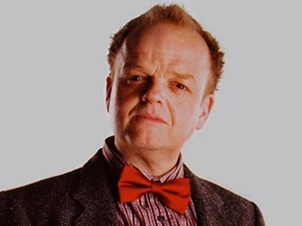

Casting the same actor to play dream merchants, knocking characters unconscious and altering their memories and psyches? The universe is rarely so lazy. Other mirrors in this episode are easy to pull out. The Doctor and Sherlock have long been read as mirrors for each other – characters who have existed for a long time and are constantly evolving through adaptation, super-intelligent loners, but in case that wasn’t obvious, Moffat went to a reasonable effort to style them very similarly when both tenures began.
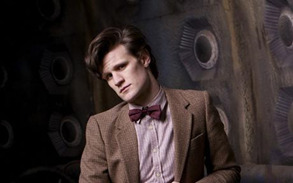
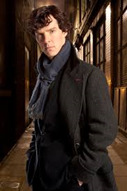
Both of these are very conscious remodellings of old characters. Much was made of Matt Smith being the youngest Doctor ever (26!), and Cumberbatch’s youth set him apart from the Rathbone/Brett image in everybody’s heads. There’s something young and modern here – but both still dress like they’re slightly ‘out of their time’, which of course they are. Coming to terms with modernity is the central challenge that Sherlock is going to have to face. And then, of course, there’s the hair – instantly recognisable to the character in both cases, yet remarkably similar.
If the Doctor and Sherlock are mirrors, Amy as the Doctor’s companion should be linked to John. Amy ran away on the night before her wedding, and whilst she is reasonably happy with Rory in the long term of the series, this episode is about her making the decision between domesticity and adventure – a pretty clear link to John in s3 and 4. This episode is particularly important for TST however, because Amy is heavily pregnant in the domestic dream – but she is far from enthused, torn between domestic life with Rory and wanting to run off with the Doctor. However, I grant the similarity with Martin Freeman isn’t striking.

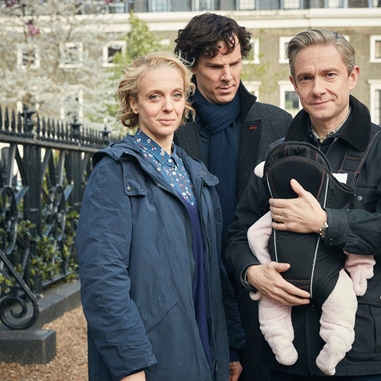
Do note, however, the similarly uncomfortable dynamic in both of these photos – hilarious.
The parallel dream!verses created broadly represent John’s dilemma from TST, and if we followed Amy’s Choice as it seems on the surface, we would end up with a pretty straight reading of TST – John spends too much time with Sherlock, they’re all in danger, Mary dies and John is suicidal because of it. Broadly speaking, this works – Rory is killed in the dream (with a really nice visual parallel to TST) and Amy crashes a bus and kills herself because she doesn’t want to live without Rory. Amy picks the domestic sphere and although it takes several more series to play out in full, this is broadly the direction the series takes us in.


In both scenes, Sherlock and the Doctor are left standing off to the right, unsure of what to do – if you watch both scenes in parallel, it’s striking. There’s a great article here talking about how the angle demonstrates the Doctor to be powerless for the first time, amongst other things. X Amy asks the Doctor what is the point of him, and John’s declaration that Sherlock has broken his vow carries similar weight – they were supposed to save them.
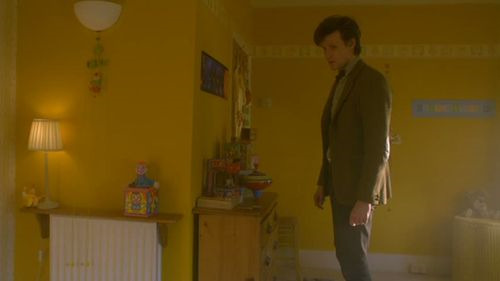
The title of the episode is Amy’s Choice, and this, we’re led to believe, is the moment when Amy chooses Rory. I don’t believe this. The Doctor/Rory conflict goes on for a lot longer than this, and it’s far too early in their first series to resolve it. It would leave a lot of later episodes without nearly so much tension. It’s true that Amy does have some agency in choosing – the science is questionable, as the Doctor says they’ve all tapped into some space LSD equivalent from an unmentioned offscreen adventure which has induced a mutual psychic trance, which means that we’re not sure how much agency each of the characters has in this dream. It’s not seeded, and so it sounds like a fudge – deliberately. Because a pseudoscientific explanation like this can’t explain the Dream Lord himself, Amy and Rory point out, and the Doctor admits that the Dream Lord, the architect of the dreams themselves, was actually the Doctor’s psyche. The space LSD sounded like a fudge – and Amy and Rory expose that it wasn’t just a fudge on Moffat’s part, it was a fudge on the Doctor’s part.
And, crucially, what was the first thing the Doctor said about domestic!dream, long before he realised he created it?
“Oh, you’re okay. Oh, thank God. I had a terrible nightmare about you two. That was scary. Don’t ask. You don’t want to know. You’re safe now.” X
Later, when asked how he knew that the Dream Lord was him, the Doctor merely says that no one else hates him so much. Domestic!verse, then, is a manifestation of everything that the Doctor dreads – it’s his worst nightmare, being conjured by his subconscious. That nightmare involves Amy’s suicide, Rory’s death because the Doctor can’t protect them – this maps pretty neatly onto EMP theory and TST. Although John doesn’t kill himself, he is rendered suicidal in the domestic nightmare that is left behind. As the previous chapter discusses, Sherlock not being able to protect John is definitely a nightmare, but the nightmare also maps onto reality – John is suicidal, but he’s struggling to work out why, so he has to construct it through a heterosexual lens. John’s potential death and love for Mary are the two things that form the worst nightmare in both dreams, and the nightmarish sense is highlighted in TST by the deep waters metaphor.
At the very end of the episode, the Doctor’s reflection is still the Dream Lord, suggesting that this isn’t some psychic drug phenomenon, an explanation which was frankly crap. The Doctor’s dark side is still inside him. This feels like an allegory for mental illness, and mental illness crops up aplenty in Moffat’s depictions of the Doctor, particularly the later we get – the seeds of it are here. Again, although Sherlock is being killed rather than killing himself, we have seen the suicidal side of him before and it is made clear in TAB that his opinion of himself is low. EMP s4 is about him coming to terms with how he views himself, and the cognitive dissonance that we see in Amy’s Choice is a nice separation of the psyche in two that foreshadows the immense splintering that’s going to come in EMP, but particularly between John, Mycroft and Eurus.
Another nice parallel between s4 and Amy’s Choice is the idea of predictability. Way before we know that this is the Doctor’s dream, the Doctor displays a remarkable ability to finish what the Eknodines say before they do, an ability which becomes an obvious hint in hindsight. Moving over to TLD, Sherlock has similarly ridiculous powers to predict what other people will do; because this underpins TLD, it jumps out as being something that rings very false to me, almost like a parody of who Sherlock Holmes is meant to be, and so we should pay attention to it. An uncanny ability to predict what others will do – yup, that’s a dream world.
One key similarity that Amy’s Choice has with EMP theory is that a false dream premise is set up in both. Amy’s Choice suggests that there are two worlds, and only one is a dream; their survival depends on recognising which is the real one. This is, of course, a lie – both worlds are dreamed, and that false premise is created to trap them in the Doctor’s psyche, presumably until the Doctor dies (although the threat is never clearly explained). TAB sets up a real world in the form of the modern day and a false Victorian age, but the supernatural graveyard scene is the first hint that the reality/dream binary is not real, just like Amy’s Choice. This one scene is not an anomaly – the chronology of the ‘man out of my time’ scene coming after Sherlock gets off the tarmac suggests that such mixing is still going on, and we shouldn’t trust our senses. In case that point needed hammering any more, however, Steven Moffat gave us A Good Man Goes To War.
This episode is the culmination of a series in which Amy is actually an almost-person, and Amy has been dreaming all of their adventures with a flesh avatar actually having them with Rory and the Doctor. Here it is Amy, rather than the Doctor, who is dreaming, which is a little ambiguous, but there are two key aspects that parallel Amy’s Choice. The first is that, like Amy’s Choice, the flesh avatar/dream person threat doesn’t just go away. These words of Madame Kovarian are extremely important:
Fooling you once was a joy, but fooling you twice, the same way? It’s a privilege. X
Exactly what the Dream Lord does in Amy’s Choice. Furthermore, although there’s a later meta in blindness across Doctor Who and Sherlock which at some stage really needs writing, many people have made the point that Sherlock is associated with blindness throughout series 4, and so we should note that the architect of the dream people/flesh avatars is Madame Kovarian, better known (and usually credited) as the Eyepatch Lady. However, there’s one other key message they’re giving us, which comes at the end of the clip linked above – the baby’s not real. Both Amy’s Choice and A Good Man Goes To War feature Amy’s child, and in both cases the plot revolves around the emotional recognition that that world isn’t real. Given that we know that Amy is a John mirror, and that her choice between the domestic and the adventurous is consistently paralleled to John’s choice in Sherlock, this is a pretty huge indicator that something is up with Rosie even if we didn’t know it already. Indeed, the cot and mobile that the child has in Amy’s Choice are similar to Rosie’s. That baby never stood a chance.
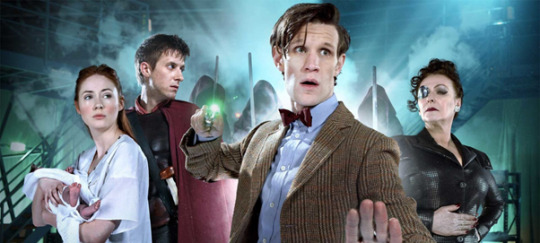
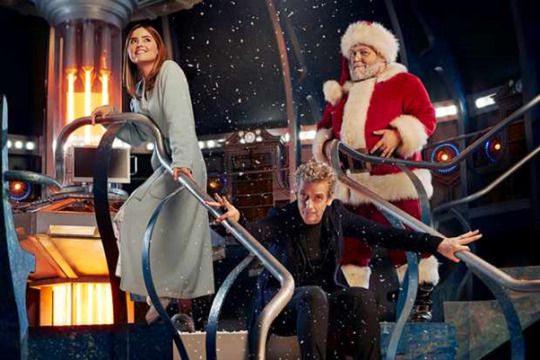
The last episode I want to briefly invoke is Last Christmas. If we’re looking for dreams, this episode really goes above and beyond. The premise is that there is an alien species called the dream crab which latches onto your face and dissolves your brain whilst putting you in a dream so that you don’t notice. To make this more confusing, it often places dreams within dreams to confuse you – whilst you’re dying. This episode came out on Christmas Day 2014, so a year after series 3 aired but before TAB, so in Sherlock-time we’ve just entered the mind palace. The title, Last Christmas, is pretty helpful here I think – of course it has relevance within the episode, but this episode should also get us thinking about what was going on this time last year, when Sherlock was airing.
We’re no stranger to dreams within dreams at this stage, but it’s interesting how the saving-the-companion vibe is still going strong here. Ostensibly, that’s not what the episode is about at all – it’s a classic everyone-trapped-on-a-base-working-together episode, but the last five minutes tacked on the end suggests that it’s far more about the Doctor’s relationship with Clara, the episode’s companion, than one might think. In this clip (X) the Doctor thinks he’s broken out of the final dream but goes back to visit Clara and realises that she is now old, and that he’s missed her life. It culminates in him apologising for getting it wrong, for not coming for her in time, for failing her; we get more of this with Clara’s actual death later in the show, but given that it’s a kid’s show and Christmas, this scene is a touch lighter than that. It’s then that Father Christmas comes in to tell the Doctor that he’s still dreaming, he can still save her – and his first word when he wakes up is “Clara”. None of the others trapped in the dream have needed his help to wake from the vision and survive; Clara, who as the companion is our John mirror, specifically needs saving, and the Doctor needs to wake up from his dream within a dream to do that.
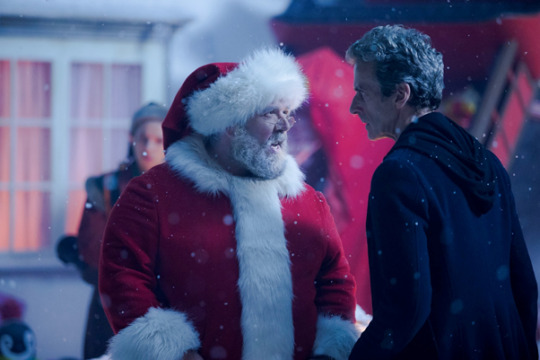
Nick Frost’s appearance as Father Christmas gave us all a good laugh, but he was also used as the indicator that the world we were perceiving was a dream world. This was made a bit of a joke of early in the episode – in a sci-fi world like this, are we seriously looking for what’s not realistic as the code to crack the dream? The exact same joke is made in Amy’s Choice, and here we’re hitting a pretty silly version of the show where they joke that just about the only character who can’t be real is Father Christmas. These hints about looking for what’s not real, though, should be taken as just that – hints. From the emergence of ‘something’s fucky’ theories early on in s4, this has been the abiding reasoning for the various forms of EMP theory that have sprung up, and they’re not wrong. However, if I had to put my money on a figure like Santa Claus, something iconic which functions as a kind of dream thermometer, I’d be guessing:
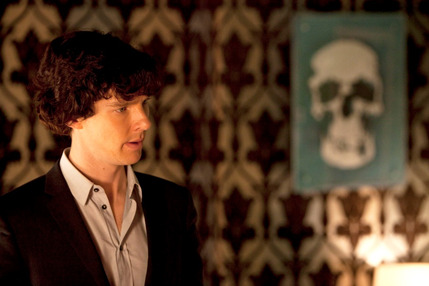
You were there before me. The fucky skull that glows, almost like a warning that this is too mad. Crucially, in Last Christmas they explain that Santa is a warning that your brain is sending you, picking the most unbelievable thing possible so that you know you’re trapped, dying in your brain. Santa Claus? Well, it’s a kid’s show, and it’s Christmas. But if I were picking a dream siren to tell me I was dying, I like to think that my subconscious would pick the glowing skull on the wall; without explanation, it’s an awful lot more direct.
There is more reference than necessary made to dream crabs making one blind, and between Madame Kovarian and the blind Doctor in the later dream episode Extremis, there’s a lot more to unpack there, but I’m going to leave that for sometime down the line, or for someone else to jump into if they would like. I also want to throw out a thought I haven’t quite come to terms with yet – the elephant in the room in Amy’s Choice. Arwel Wyn Jones would be proud of the script for Amy’s Choice – twice, it mentions the elephant in the room, and so I feel I have to do the same. The first time, you could blink and miss it – the Doctor calls pregnant Amy ‘elephanty’. But the second time, we get this exchange:
DOCTOR: Now, we all know there’s an elephant in the room.
AMY: I have to be this size, I’m having a baby.
DOCTOR: No, no. The hormones seem real, but no. Is nobody going to mention Rory’s ponytail? You hold him down, I’ll cut it off? X
The elephant in the room – that the baby’s not real? Possibly, but not what we normally take it to mean. Rory’s ponytail also has not shaving for Sherlock Holmes vibes, but again it’s not quite concrete in my mind. These little bits at the end aren’t quite tied up, and I would love to hear what people have to say about them. That, however, is for another day! The next chapter in this series will be jumping back into episode-by-episode analysis with TLD – see you there.
#emp theory#wholock#tjlc#thewatsonbeekeepers#meta#my meta#mine#bbc sherlock#chapter eight: dream a little dream of me#tjlc is real#johnlock#sherlock holmes#doctor who#steven moffat#mark gatiss
12 notes
·
View notes
Text
Another sneak-peek at Reichenbach Falls - this time with Wholock!
Much to Irene’s surprise, the door of the police box opened then, and suddenly a man in a brown suit stepped out, hair amess. He didn’t seem to have noticed Irene, and she used the opportunity to stare at him and take in as many details as she could. His outfit was… alright. Nothing spectacular, but it did suit him, no pun intended. And then the man spoke. In an English bloody accent.
“BLIMEY!” he exclaimed, scrunching up his nose, hands stuffed in his trouser pockets. He sucked in a deep breath (Irene gagged) and let his face be bathed in the warm sunlight. “Never woulda thought I’d get to smell nature like THIS.”
Irene regarded the WCs nearby warily, questioning the man’s sanity. And his sense of smell. Random encounters like this made her realise how much she valued her madman of a brother. And modern, civilized toilets and bathrooms they had at the Shack. She eyed the man suspiciously, and when she got a good look at his face, she gasped.
“David Tennant?”
The stranger’s face tilted to watch her, alarmed, and his posture straightened. “Me?”
“Yes?” Irene said, taking a step closer. “Is that really you?”
The man looked around and started moonwalking to one of the portables, seeking a retreat. “Absolutely not. I mean, I could be, but I think David is busy pretending not to be a demon while actually playing one who is married to an angel who is, coincidentally, pretending to be Michael Sheen. Hold on, which year is this? Perhaps you don’t know yet.”
During his small speech, Irene backed him up (not really, he just made it that dramatic) and the man opened the doors on the portable toilet behind him and he stepped in, enclosing himself in there. Death by toi tois was a cruel way to exit this world. The audible sigh told Irene that he regretted all his life choices, but yet he didn’t come out.
Irene held her breath as she came closer to the portables. She won’t leave him to suffocate in there for goodness’ sake. She knocked on the door. The man knocked back. Thinking it funny, Irene asked, “Who’s there?”
“Doctor,” was the muffled reply moments later.
“Doctor who?”
The smelly door opened and out stepped the man in a smart suit, gasping for air. “Exactyl.”
“Don’t you mean exactly?”
“No, that’s a word. Exactyl is more of a pain in my butt. That dino scientist has been driving me crazy.”
Definitely crazy, Irene thought.
(coming in April)
also, @jasombee I dedicate the ‘death by toi tois’ quote to you, and I’ll put in on your gravestone one day
#Reichenbach Falls#Sherlock#doctor who#10th doctor#totally meta#and 4th wall#wholock#irene adler#david tennant#doctor talks about good omens#episode 10 chapter 3
2 notes
·
View notes
Text
some old stuff, sherlock parallels in doctor who
only about 2 years late to be writing any sort of “meta” on the subject but. been rewatching doctor who season 10 since it’s finally available on uk netflix and thought i’d just make a little list of things in the monks trilogy that made me yell. (and make me sound like a conspiracy nutter but remember kids you’re only a nutter if you’re wrong) although i do have a feeling i already raved quite a bit about it when it aired but as i said, a list of obvious sherlock parallels had to be made, just for my own amusement if nothing else.
okay so the worst (and by worst i mean, the most meta) one of them all is probaby extremis, written by steven moffat. basically you have
“veritas”, the truth, old secret text ooooh, people who read it died so the secret is never revealed
and these people are said to have died by suicide, almost like serial suicides, hmm!
the pope, a literal vatican cameo (he also interrupts a gay date, rude)
cardinal ANGELO, honestly
also a reference to a pope from 1045 who was called pope benedict, what a funny coincidence
when the monks take the veritas from the doctor just as he’s about to read it they have this little “this is not a game” “this is a game” exchange
also, the doctor in this room in the beginning?



looks a hell of a lot like the courtroom in sherlock’s mind palace in TSOT.
not to mention the sonic sunglasses

not just your Ordinary Spectacles™!
and some of these lines could be interpreted in many ways



idk man, knowing how to read some old book? subtext?? or something? could be dangerous.
and the doctor starts to read the veritas but loses his eyesight again, i’m getting TD12 vibes

and what have got here, projectors!!

nothing is real. it’s a simulation. could be a mind stage, or an unreliable blog perhaps? who knows! anyway i like this particular line of the doctor’s:

i agree, let’s.
oh and of course i’m clueing for looks in every little irrelevant thing, that dude who emailed the veritas to CERN sent some other emails too, i highlighted my favourites

the next episode, pyramid at the end of the world, written by moffat and peter harness. this is a very light one compared to extremis, as in there aren’t sherlock references every five minutes (those references being very normal things that exist or things people say and my consp brain just wants to make these connections lmao) anyway, there’s that scene where there’s lots of press outside the pyramid, and they get simultaneous messages (oh where have we seen this before?!) on their phones.
and this. #221

lie of the land is the last episode of the trilogy and moffat did not write this but i suppose he was involved anyway, being the showrunner and all, idk how it really works but you’d think so. anyway if we want to find references to a work of fiction i think the overall reference/resemblance is to 1984 if anything, but the whole idea of bending the truth and brainwash can always be applied to your favourite conspiracy, too.
and then we have this character called BILL, gay, dark curly hair, doing this pose

but you know it’s just a normal everyday thing to do and just a coincidence for sure.
and the doctor is being held prisoner in the middle of the sea, on a ship tho, not on an island but hey.
and we finally open the vault and get to meet missy

some crazy lady with a musical instrument behind transparent walls. who apparently can get out if she wants to

i’m not sure if the walls are glass in this one tho, must be some alien material judging by the distortion

ANYWAY i don’t want to draw too many parallels between missy and eurus since missy/master have their own story line in DW but in this particular episode i couldn’t help but notice some similarities. (hmm but wasn’t there some sort of fight or something between missy (or was it still master?) and that molly hooper clone in one of the earlier episodes? did she/he kill her?? or something? can’t remember, anyway.)
but yeah, that glass/whatever material cage actually looks a lot more like the one in skyfall. but considering how heavily that film has influenced mofftiss with s4 especially, well... i’ll leave you to your deductions.
so yeah. old news, even to me but just wanted to do a lil recap after refreshing my memory on these episodes. :D tagging a few people but please feel free to ignore as this is just a silly old thing.
@tjlcisthenewsexy @raggedyblue @devoursjohnlock @sarahthecoat
32 notes
·
View notes
Text
Wait a minute...
Does anyone else remember when all those pre-S4 metas were going around predicting that Sherlock might go blind? Well, we were wrong. But then, enter Doctor Who and...
#A bit creepy#Moffat?!#doctor who#wholock#BBC Sherlock#tjlc#twelve#dw series 10 spoilers#Sherlock meta
14 notes
·
View notes
Text
do I write a Wholock meta about Doctor Mysterio? Or has that been done? Or will I even finish it if I start?
1 note
·
View note
Video
tumblr
So this is my new video . It's inspired by John's mind bungalow theory . ❤ it's quite sad - I cried 5 times making this. This is my favourite video I've done. Ever. It's like my own season 4 fix it. It's on my YouTube which is moriartyiscool so if you'd like to check out other videos I've made you can go there. I love you guys and this love story was what we deserved so whether you're taking a step back or tin hatting this is something to enjoy x
#sherlock#tjlc#tjlc explained#johnlock is real#tfhc#tin hatting#tin hat squad#sherlockian#wholock#superwholock#benedict cumberbatch#martin freeman#tfp#sherlock tfp#sherlock meta#mystrade#moftiss#queerbaiting
95 notes
·
View notes
Text
On the topic of Sherlock and Doctor Who parallels btw. Don't be deterred by the convoluted explanation of the plot, there are a number of undeniable similarities here.
Sherlock and Doctor Who - Similarities in Let’s Kill Hitler
I’m currently rewatching series six of Doctor Who and there are some similarities to Sherlock in there that are worth posting about. I’ll use the episode Let’s Kill Hitler as an example.
A short synopsis: At this point in the story, things are a little complex. Amy has had a baby, which was pretty much immediately taken from her. She called the baby Melody Pond, after her best friend Mels. Now the Doctor is looking for her – the thing is, though, that they know Melody isn’t just a normal baby. She was conceived on the TARDIS and it has influenced her genes so that she’s basically part Timelord. Also, the organisation that’s taken her away programs her to kill the Doctor. ALSO, she’s River Song, whom they already know quite well. They learned that in the last episode.
So Amy, Rory, and the Doctor meet up to talk about whether he’s made any progress with finding Melody, when suddenly Mels shows up, pursued by the police and holding a gun. She threatens them with the gun and makes the Doctor take them to 1930s Berlin to kill Hitler.
Things get more complicated here. They put Hitler in a cupboard after an altercation with a robot man inhabited by tiny people who control him and whose job it is to kill bad people. Note: it recognises Mels and knows she’s a criminal who ends up killing the Doctor at some point. It’ll want to kill her later. For now this robot man goes into observation mode (aka he faints) and doesn’t become relevant again until later.
However, sometime during that scene, Mels took a shot to the abdomen. She doesn’t die and instead regenerates into… River Song! Suddenly everything becomes clear – Mels is River is Melody. And she wants to kill the Doctor. At first it seems she’s going to shoot him, but in the end it turns out she poisoned him with a kiss.

And from here on out, the hlv similarities start.
Weiterlesen
23 notes
·
View notes
Text
The Sculpture Code Parallel (‘Doctor Who’ and ‘Sherlock’)
Many metas have been written about Madame Vastra and Jenny on ‘Doctor Who’ and about how these two ladies were created by Moffat as intentional foreshadowing for the eventual outcome on BBC ‘Sherlock’.
Well, that parallel is even more in-your-face-kinda obvious than a lot of people realise.
Remember all those sculptures in the episode ‘The Blind Banker’ (TBB) on BBC ‘Sherlock’?
I had previously written a long-ish meta (x) about what sculptures exactly were picked by 'Sherlock’s’ set designers for that episode (TBB) and how they represent 'Sherlock’s’ gay subtext.
So, seeing as these sculptures play such an important role for the gay subtext of the show ‘Sherlock’, do we really think it’s a coincidence that the exact same sculptural types were chosen for ‘Doctor Who’? And not just for any episode of ‘Doctor Who’, but specifically for the Vastra/Jenny episodes AND SPECIFICALLY FOR THE HOME THESE TWO LADIES SHARE in Victorian London!
I mean, they have literally taken the sculptures from the most subtext-laden episode of ‘Sherlock’ (TBB), an episode that is all about codes and ciphers, and put them in Jenny and Vastra’s love nest, a re-imagined 221b Baker Street if ever I’ve seen one.
Look here:

This screencap is from TBB (‘Sherlock’). In the aforementioned ‘Sherlock’ sculpture meta (x), I had elaborated on this Venus sculpture: It represents the half-hidden, yet also in-plain-sight kinda subtext of the show BBC ‘Sherlock’. (That’s why it’s literally covered in code.)
To make sure we get that joke about it being half-hidden, yet also in-plain-sight, the set designers specifically chose the ‘Aphrodite of Knidos’ by Praxiteles (x) – a sculpture of the ‘Venus pudica’ type. (Sculptures of the ‘Venus pudica’ type are, by definition, half hidden and yet also naked and bare, for everyone to see.)
Now look what Madame Vastra and Jenny have got in their home (in a veritable 221b Baker Street copy!):

(Continued under the cut...)
The sculpture on the right hand side is NOT the ‘Aphrodite of Knidos’ we know from that certain ‘Sherlock’ episode, but it belongs to the EXACT SAME sculptural type: it’s a ‘Venus pudica’ style sculpture, too.
I mean this beauty here:

This masterpiece is the ‘Venus Italica’ (x) by Antonia Canova (BTW, amongst sculptors, this genius is a particular favourite of yours truly). And yes, just like the one on BBC ‘Sherlock’, this one is a ‘Venus pudica’ style sculpture, too.
‘Venus pudica’ style sculptures are, by definition, half covered and half naked, ie, half hidden and half out in the open and nakedly in plain sight.
They draw all their erotic attraction from this little game of showing and hiding at the same time...like, you know, the whole subtext game that’s going on with Madame Vastra and Jenny, that is half-hidden and half in-your-face. Moffat is coquettishly playing with us, half revealing what he’s doing and half being coy about it.
Oh, and by the way, have I mentioned this is a statue by Antonio Canova? Haven’t we seen this artist represented on BBC ‘Sherlock’, too?
Oh, yes, we have!

In s3 of BBC ‘Sherlock’ they included a particularly nice Canova sculpture, one that represents love, too. Just like a Venus. (I had previously written a meta about it here: x ).
Unfortunately they also cut off that Canova sculpture’s head and presented it to us as a bust. But with Sherlock pretending to be all-brain, a head without a body, so to speak, the fact that we’re shown only its head was a fitting choice, I think.
Do you think those sculpture parallels between ‘Sherlock’ and ‘Doctor Who’ are cool? Well, wait for it. You’ve seen nothing yet.
There’s more!
The other statue in Madame Vastra’s living room (the one on the left hand side) is ALSO a ‘Venus pudica’ style sculpture. One that is so well-known I’m sure you will all immediately recognise it:

It’s the ‘Venus de Milo’ herself (x). The beautiful. The one and only.
Ta-daaa!
Another ‘Venus pudica’. Same subtext.
Oh, and remember that the episode TBB of ‘Sherlock’ had two (!) ‘Venus pudica’ style sculptures in it, too! Just like this episode of ‘Doctor Who’.
Apart from the ‘Aphrodite of Knidos’ mentioned above, that ‘Sherlock’ episode also showcased a second (!) Venus, a ‘Venus Anadyomene’, in those museum scenes. As a matter of fact, it was a sculpture very similar to the ‘Venus de Milo’ used on ‘Doctor Who’.
It was sitting right between Sherlock and Soo-Lin Yao, when Soo-Lin almost dropped the tea pot (!):

Nice placement right between Sherlock and his character mirror Soo-Lin. Right above her hand with the tea pot (!)...just in case we didn’t get the whole “Venus + tea (gay love)” subtext...Haha!
The statue is a bit dark here.
You can see it better in one of the scenes in the museum’s restoration room:

This second Venus on BBC ‘Sherlock’ is incredibly similar to the ‘Venus de Milo’ used as the second statue in Madame Vastra’s living room. Hell, if it weren’t for the missing head this statue on ‘Sherlock’ could BE the ‘Venus de Milo’, too.
In other words, we get two (!) ‘Venus pudica’ style statues in BOTH ‘Doctor Who’ AND ‘Sherlock’.
Both times one of the statues is an obvious ‘Venus pudica’ and the other one is a sub-type: a ‘Venus Anadyomene’.
What a weird...uhm... “coincidence”...*cough*...;)
And all of that doesn’t just happen in ANY ‘Doctor Who’ episode. It happens in one of the episodes that have Madame Vastra and Jenny in them, the characters that are just basically Sherlock-and-John templates.
What’s more, it happens in the ‘Doctor Who’ episode ‘Deep Breath’, an episode that has the most blatant, most brazen, Sherlock-y subtext I have seen in any of the Vastra/Jenny episodes.
The intentional wink-wink parallels to ‘Sherlock’ in ‘Deep Breath’ are so in-your-face that the notion that this could all be just some giant coincidence is simply laughable.
THAT is the episode in which they’ve parked two giant ‘Venus pudica’ type statues in Jenny and Vastra’s living room.
It’s just...I just wanna throw up my hands here and say, “I give up.” Because subtle this is not.
Oh, and by the way: Nicely placed, those two statues on ‘Doctor Who’. Note the shot composition here, with the two sculptures positioned behind Vastra and Jenny, respectively:

It’s a nice little hint, I grant you that.
Jenny (aka John) mirrors Canova’s ‘Venus Italica’. And Madame Vastra (aka Sherlock) mirrors the ‘Venus de Milo’.
Canova’s ‘Venus Italica’ is best known for keeping half of herself covered up. Because Jenny (aka John) hides half of himself? :)
And the ‘Venus de Milo’ is, of course, best known for the mystery of her missing arms. Because Madame Vastra, aka Sherlock, isn’t doing anything with his hands right now, ie, isn’t acting on what he’s feeling?
Nice.
Also, the shot composition is really, really reminiscent of the one in this infamous shot in ‘Sherlock’s’ THoB:

Coincidence?
In any case, both shots, the one in ‘Doctor Who’ and the one in ‘Sherlock’ seem to convey the same type of meaning:
We have two characters and their respective mirrors positioned (at an angle) in front of one another, ergo, both characters and their respective mirrors share certain traits.

Oh, and by the way, that is literally the moment Jenny serves the tea (gay love). Oh, man, Moffat! The tea thing again? And right in front of the two ‘Venus pudica’ statues? Really?
Let’s not even mention the suggestive fact that the whole fun about those two Venus statues is that they both have, well, a naked bum, a very naked bum, and that, in this shot, Jenny is...well, uhm, presenting her behind, as it were...whilst Clara (the other Sherlock!mirror) is staring right at it, Jenny’s bum, I mean. Let’s not even go into that...
Now, you could, of course, argue, “Sage, these statues on ‘Doctor Who’ aren’t about Sherlock at all. They are statues of two half-naked women, after all. This is Jenny and Vastra’s house. And this episode does emphasise the fact that Vastra enjoys being surrounded by feminine beauty. After all, beautiful women ‘brighten up the room tremendously’, according to Vastra.”
Fair enough...Vastra and Jenny are of the Sapphic persuasion.:) So, maybe the two Venus statues there just mean that the sight of beautiful half-naked women is something the occupants of this household enjoy.
Well, yeeeeah....EXCEPT...those aren’t the only sculptures in that drawing room.
What’s this I spy with my little Sherlock-trained-eye?

Yep, this is most definitely NOT a woman!
Not only is this a man. It is THE man. Any gay man art nerd knows this is the epitome of male beauty. This is the gayest statue of all statues.:) It’s the head of the most beautiful man in the world: the ‘Apollo Belvedere’ (x).
So, if Vastra and Jenny just enjoy being surrounded by female beauty what is this sculpture doing there? It’s a sculpture that has had an enormous impact on gay (male!) culture.
So, what is this lithe and lissome lad doing in a household of luscious lesbianism?
It is not the sort of thing ladies who, erm, enjoy the company of other ladies put in their homes.
And look...What have we got here in TBB (‘Sherlock’)?

Oh, yes! That’s him again. The ‘Apollo Belvedere’.
In TBB, the ‘Apollo Belvedere’ sculpture was more or less a stand-in for Sherlock himself. (All cut-off heads on BBC ‘Sherlock’ are stand-ins for Sherlock’s character. And this extends to all the different sculptural busts on the show, too.)
In my sculpture meta (x) about ‘Sherlock’, I had pointed out that, in TBB, the ‘Apollo Belvedere’ sculpture meant that Andy (a John!mirror) was, at that moment; pining after Soo-Lin (a Sherlock!mirror). Andy (=John) was reprimanded here to stay away from Soo-Lin (Sherlock) by his boss (another Sherlock!mirror with dark curls and all).
The ‘Apollo Belvedere’ (the epitome of male beauty) was standing right between Andy and his boss, as this conversation was happening, as if it were symbolically representing their topic of conversation. So, yeah:
The ‘Apollo Belvedere’=Sherlock.
In ‘Deep Breath’ (‘Doctor Who’) the exact same ‘Apollo Belvedere’ bust makes an appearance again.
Note how, in this shot, the placement of the ‘Apollo Belvedere’ behind Clara underlines the parallel between them:

They are both shown in profile, facing the same direction. As if to underline that THEY ARE THE SAME. The ‘Apollo Belvedere’ is Sherlock. And Clara, too, is a Sherlock!mirror. The curly hairstyle they both sport here highlights that fact even more.
Not enough for you? It gets even better:

The ‘Apollo Belvedere’ is shown in the same frame as Clara again – remember that Clara was a blatant Sherlock!mirror throughout her entire run on ‘Doctor Who’ – while Clara is scouring the newspaper for what will turn out to be an ad for ‘Mancini’s’ (!). And to top it all off, she’s holding a Holmesian magnifying glass in her hand at that very moment.
The ‘Apollo Belvedere’ bust and the magnifying glass alone made me almost hyperventilate from a ‘Sherlock’ subtext overload.
The shot of the ‘Mancini’ ad transitions into a shot of Clara’s happy face, a face that’s smiling because of her sudden discovery (!) of a secret message...ahem...

And in that all-smiles-at-the-secret-message shot, Clara’s head is overlaying the sculpture. She has practically merged and become one with the head of the ‘Apollo Belvedere’.

As I said, the ‘Apollo Belvedere’ is basically Sherlock.
Clara is Sherlock here.
And at a moment of discovery, at that! The discovery of a secret, hidden message.
That’s beyond brilliant, isn’t it? Somebody on that set must have had a lot of fun with these.
Needless to say that Clara’s transformation into the ‘Apollo Belvedere’ happens right above a tea pot (!):

Because, you know, how else would we know what all the sculptures meant if they weren’t coming with a handy tea pot right next to them and all. Duh!

Anyway...
This abundance of sculpture subtext was not enough for whoever was having their Sherlock-y field day in that episode of ‘Doctor Who’:
The ‘Apollo Belvedere’ turns up one more time in ‘Deep Breath’. And it’s NOT in Madame Vastra’s living room.
It’s at ‘Mancini’s’. Yes, you may scream now.
Yes, it’s at freakin’ ‘Mancini’s’! How much Sherlock-Holmesier can it get?!!!

Note how the ‘Apollo Belvedere’ bust is positioned right next to the Half-Faced Man here.
I’m sure lots of metas have already been written about how the Half-Faced Man in ‘Deep Breath’ is an obvious Sherlock!mirror, what with his eye thing and the fact that he will take a literal fall a few moments later. (Also...Big Ben!)
And let’s not even mention the fact that the Half-Faced Man had turned into a stitched-together Frankenstein’s monster over the course of several centuries...you know, like the iconic Sherlock Holmes character, who, over the course of 130+ years, through adaptation after adaptation, has become unrecognizable to anyone who fell in love with the original Arthur Conan Doyle stories. Nice joke, that.
Yes, the Half-Faced Man in ‘Deep Breath’ is a Sherlock!mirror. But I’m sure you all knew that already.
But please take a look at the placement of that ‘Apollo Belvedere’ here again. Same as with Clara: both in profile, both facing the same direction:

And to top it all off, the Half-Faced Man then moves right in front of the ‘Apollo Belvedere’, basically taking the place of that sculpture, merging with it and becoming one with it...just like Clara had done earlier:

The Half-Faced Man is the ‘Apollo Belvedere’ is Sherlock.
But he’s a stitched-together, monstrous version of Sherlock. One that doesn’t know what’s real, what’s original about him anymore. It’s possible that nothing is left of the original man. Everything has been stitched-on and replaced at some point. What a really nice meta joke about what became of the iconic Sherlock Holmes character as he wandered from one adaptation to the next. There’s nothing real left about the numerous Sherlock Holmeses we have seen over the decades.
And ‘Doctor Who’ tells us what HAS to happen to a Sherlock like this. He has to die.
He has to fall.
He has to die.

(And right on top of Big Ben, at that. That’s a particularly nice fandom present by Moffat, seeing as we’re all speculating that the old homophobic version of Sherlock will symbolically ‘die’ as Sherlock kisses John right there on top of Big Ben or something.)
But does this mean that Sherlock Holmes has to die as an iconic character, too?
No, obviously, it doesn’t.
Because the Half-Faced Man isn’t the only Sherlock!mirror in those scenes!
The other one is the Doctor himself. (The Doctor has been a Sherlock!mirror again and again. And never more so than in the episode ‘Deep Breath’.)
How do we know the Doctor is a Sherlock!mirror here, too?
Well, the Half-Faced Man isn’t the only one who’s positioned right in front of the ‘Apollo Belvedere’:

And this time it’s the Doctor who’s mirroring the ‘Apollo Belvedere’ bust as he’s shown to us in profile, facing the same direction.
The Doctor is Sherlock here, too.
But a better, more real version of Sherlock. That’s the version that will survive. It’s the original. Not the stitched-together monster.
The entire conversation between the Half-Faced Man and the Doctor here is all about identity. The question of Who-am-I.
Seriously, re-watch it and listen to the dialogue there. It’s quite clever.


They are both Sherlock.
But one of them is the stitched-together, monstrous product of the centuries. The other one is the real deal.
That’s why, throughout the episode, there is so much emphasis being placed on the fact that this Doctor is really THE Doctor. That he might look a bit different, but that he is really THE MAN. That he is the same man. The real, the original one. That he’s real underneath, no matter what face he has right now. That point is really driven home a few minutes later in a phone conversation that Clara has: This is the real, the original HE.
And Moffat tells us here that it’s THIS ONE who’s Sherlock. This is the one who will survive. The real Sherlock. The one underneath. It doesn’t matter whose face he’s got right now, it matters who he is underneath. It matters that he is real (which in the case of ‘Sherlock’ will probably mean that he’s gay).
The other, the monstrous version, however, is the product of centuries of adaptations that added on their own ‘dead body parts’. It’s the version that can never be true to what the real Sherlock is all about. That’s why this one has to die.
And this entire statement is just subtly underlined by the same sculpture that had already been used in the episode TBB of ‘Sherlock’ to symbolically represent Sherlock: the ‘Apollo Belvedere’.
It’s ingenious.
Okay, there’s a lot more to be said about this episode of ‘Doctor Who’. But I’m really tired right now and can’t type anymore. I get tired more quickly since the surgery.
Anyway, I hope you enjoyed this little excursion into the art world.
Here’s (as always) the link to my master meta page: x (although I’m afraid I haven’t updated it in a while, so checking out my ‘sherlock meta’ tag might be a better idea if you’re looking for something).
All the ‘Doctor Who’ screencaps in this post were taken from here.
All the ‘Sherlock’ screencaps in this post were taken from here.
Tagging: @ebaeschnbliah @tjlcisthenewsexy @gosherlocked @possiblyimbiassed @fellshish @88thparallel @spenglernot @monikakrasnorada @the-7-percent-solution @raggedyblue @sarahthecoat @sherlockshadow @loveismyrevolution @inevitably-johnlocked @jenna221b @mrskolesouniverse @green-violin-bow @loudest-subtext-in-tv
#sherlock meta#Doctor Who meta#doctor who#Sherlock Holmes#bbc sherlock#wholock#wholock meta#deep breath#the hounds of baskerville#johnlock meta#the blind banker
69 notes
·
View notes
Text
SuperWhoLock survey
Hello! I’m still collecting answers in my superwholock survey. I will use the answers in my MA thesis in order to present tumblr and fandoms as best as I can.
Here’s the link:
https://docs.google.com/forms/d/e/1FAIpQLSdjTSREGj06xk4LI2-wWvBDb6gv_rWvpvq6xpY2JOoaWNST0w/viewform?usp=sf_link
I love all the answers I already got and always feel so excited when there are new opinions and shared experiences and feelings!
#superwholock#superwholock survey#Sherlock#supernatural#doctor who#tumblr#Fandoms#meta tumblr#johnlock#Destiel#MA research#university#wholock#academia#student#college#study
12 notes
·
View notes
Text
me, surveying the wikipedia episode list for what's ahead for me in dw s9 and absorbing the fact that the season was written as 4 two-parters, a one-off, and a three-part finale: i guess i write wholock meta now
7 notes
·
View notes
Link
Word count: 41,473 Chapters: 8/8 Fandom: Sherlock (TV), Doctor Who (2005) Rating: Teen And Up Audiences Warnings: No Archive Warnings Apply Relationships: Sherlock Holmes/John Watson, Mary Morstan/John Watson, Clara/Harry Watson, Harry Watson & John Watson Characters: Sherlock Holmes, John Watson, Mrs. Hudson (Sherlock Holmes), Harry Watson, Molly Hooper, Greg Lestrade, Thirteenth Doctor, Clara (Sherlock), Donna Noble, Tenth Doctor Additional Tags: Christmas, Inspired by A Christmas Carol, Alternative Timelines, Crossover, Fix-It, Fix-It of Sorts, Post-Canon Fix-It Series: Part 8 of Wild About Harry Summary:
John's not really big on Christmas; and this year, the first after Mary's death, he's not feeling it. Everyone's away, Sherlock's on a case--alone--and Rosie's asleep. But that's all right. He's fine. He'll just have a quiet Christmas Eve by himself, drinking in front of the telly.
Only out there in time and space, there's another Doctor who thinks that sounds like the saddest thing ever. And she's going to do something about it.
Thirteen takes John on a whirlwind tour of Christmases past and future. The more he learns about this time travel thing, the more John starts to wonder: how did his current timeline become...what it is? And might these alternatives hold the key to a less miserable present, and maybe a brighter future?
======
Rec: Once again, I am baffled by the low number of hits this fic has received. It’s a Johnlock-focused post-series 4 fixit with an intricate and creative plot, vivid characterizations, amazing OC’s, brilliant insights and commentary, exciting action sequences, barely any Rosie, introspection and healing, profound emotional connections, a resolution that explains much of the downright inconsistency and weirdness of series 4, and what might be the best twist I have ever seen in a fic. This was literally my face when I got to it:

So if you are up for any or all of that, this is the place to find it.
Having said that, there are still two factors that I can see that might make people hesitate, so let me address those. First, the crossover aspect. All I know about Doctor Who is what I’ve gleaned from other Wholock crossovers, regular Sherlock fics in which John is a fan, anti-Mofftiss metas and rants on Tumblr, and a few gifsets from mutuals who are fans of both shows. You don’t need more than that. I did skim over the cybermen stuff a bit but I suspect that anyone who has actually watched Doctor Who will enjoy this twice as much. I think the Doctor(s) in particular are fabulously done and I enjoyed the heck out of them even with no experience of the real actors.
The second thing is the fact that this is part 8 of a much longer series (itself covering at least 2 separate parallel timelines) and it’s true that there are some things that might be weird or confusing without at least some basic familiarity with the previous stories. If you want to read this cold, then just go in with the understanding that there are alternate realities, and John from the series 4 reality visits some of the alternates in a “ghosts of Christmas past/present/future” type of scenario. If you want the full, rich appreciation of the author’s fertile mind and creative genius, do yourself a favor and read the earlier parts of the series too, either before or after you’ve read this. I guarantee you won’t be disappointed.
44 notes
·
View notes
Text
wowie i forgot ‘world enough and time’ was like That as well, written by moff and directed by talalay, and we have a gay character named bill shot in the chest and falling backwards, and missy telling razor/master to maintain at least 3ft distance
i mean sure, coincidences but.
(also doctor said deduction lol and bill wore a john watson style jumper)
13 notes
·
View notes
Link
Look, Anny found a monk statue in the Niagara Falls in the last episode of Doctor Who! Aah, read the thread
2 notes
·
View notes